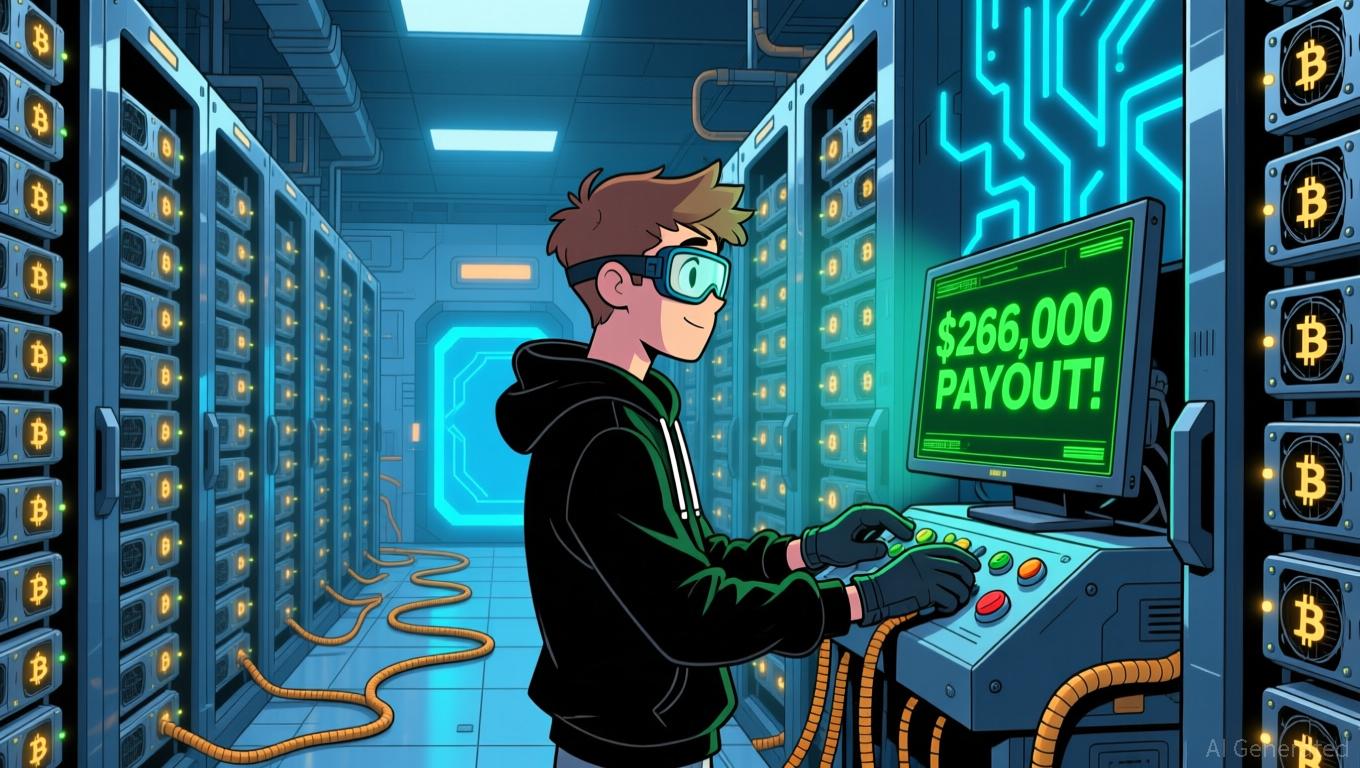Vitalik Buterin's Perspective on ZK Technology: Driving Crypto Infrastructure Forward and Enabling Sustainable Value Creation
- Vitalik Buterin champions ZK technology as Ethereum's scalability and privacy cornerstone in 2025. - He proposes removing modexp precompile to cut ZK computational overhead by 50x, prioritizing ZK-native efficiency. - ZK integration with MPC/FHE creates hybrid cryptographic stacks, accelerating institutional adoption and 30% stablecoin transaction volume via rollups. - Projects like Polygon's Katana ($512M TVL) and ZKP's ZK-native blockchain demonstrate ZK's transition from experimental to infrastructure
Buterin’s Push: Breaking Down ZK Scalability Obstacles
This year, Buterin’s standout initiative is his campaign to remove Ethereum’s modexp precompile, an outdated feature that significantly hampers ZK-EVM performance.
In addition to technical changes, Buterin advocates for combining ZK proofs with other advanced technologies such as multi-party computation (MPC), fully homomorphic encryption (FHE), and trusted execution environments (TEE).
ZK’s Expanding Influence in Crypto Infrastructure
Ethereum’s modular strategy for ZK integration—through upgrades like EIP-4844 and zk-rollups—has already yielded concrete benefits. Yet, initiatives such as Polygon’s Katana and Zero Knowledge Proof (ZKP) show that ZK technology is spreading beyond Ethereum’s boundaries.
Katana, Polygon’s DeFi-oriented ZK rollup, has amassed $512 million in total value locked (TVL), leveraging Polygon’s Agglayer framework to connect various ZK rollups
The move from theoretical frameworks (such as SNARKs and STARKs) to real-world applications has quickened ZK’s uptake.
Economic Impact: From Transaction Speed to Market Forecasts
The economic promise of ZK technology is evident in its capacity to solve scalability issues and meet institutional requirements.
Market forecasts further reinforce ZK’s economic outlook.
Nonetheless, obstacles remain.
Looking Ahead: Navigating Challenges and Regulatory Developments
Despite its advantages, ZK technology still faces hurdles such as high proof generation costs, hardware demands, and decentralization concerns
For those investing, opportunities exist in governance tokens, infrastructure services, and cross-chain liquidity platforms
Summary
Vitalik Buterin’s promotion of ZK technology goes beyond technical innovation; it’s a strategic effort to reshape blockchain’s foundation. By tackling scalability challenges and encouraging hybrid cryptographic solutions, he has made ZK a key component of Ethereum’s roadmap. At the same time, projects like Katana and ZKP showcase ZK’s shift from experimental to indispensable. As institutional adoption and market expectations converge, ZK’s potential for long-term value capture looks strong—provided that issues around decentralization and governance are properly managed. For investors, the ZK sector presents a promising mix of innovation and infrastructure, though careful navigation of its evolving risks is essential.
Disclaimer: The content of this article solely reflects the author's opinion and does not represent the platform in any capacity. This article is not intended to serve as a reference for making investment decisions.
You may also like
Milei's $LIBRA Endorsement Reportedly Led to $100M Cryptocurrency Crash, Investigation Suggested
- Argentine President Javier Milei faces investigation for promoting $LIBRA, a collapsed crypto linked to $100M+ investor losses. - Congressional report claims his endorsement boosted the token's visibility, enabling a "rug pull" and draining liquidity pools. - The probe also ties Milei to prior crypto projects and corruption allegations involving his sister at the National Disability Agency. - Legal actions freeze assets of $LIBRA organizers, while political challenges persist amid a new Congress dominate

Bitcoin Updates: U.S. Crypto Mining Companies Face Espionage Concerns and Growth Challenges During Bitmain Investigation
- U.S. authorities investigate Bitmain's ASICs for potential espionage risks, impacting miners reliant on its 80% market-dominant hardware . - American Bitcoin's Trump-linked purchase of 16,299 Bitmain miners raises conflict concerns amid strained U.S.-China supply chains. - Canaan Inc. reports record $30.6M Bitcoin mining revenue and 31% North American hardware sales growth despite industry challenges. - SOLAI pivots to infrastructure-as-a-service, earning $2.9M in data center fees as self-mining revenue

Fed's Split Between Doves and Hawks Fuels Crypto's Unsteady Surge
- NY Fed's John Williams hinted at potential December rate cut, sparking crypto market surge as traders priced in 60% cut probability. - Dallas Fed's Lorie Logan warned against premature cuts, highlighting FOMC divisions revealed in October meeting minutes. - BofA's Hartnett linked crypto's 35-45% declines to liquidity risks, noting $2.2B in record fund outflows as caution grows. - Former Fed adviser El-Erian cautioned against overreacting to dovish signals, citing delayed inflation data and hawkish resist

Solana News Today: Solana Faces Key Price Challenge: Can Strong Fundamentals Ignite a Bull Rally?
- Solana shows reversal signals via wallet growth and partnerships expanding real-world crypto utility. - Mastercard's Solflare debit card and 21shares' Solana ETF highlight institutional adoption amid 83% developer growth. - Latin American expansion through MiniPay's local payment integration boosts Solana's low-cost settlement appeal. - Price remains pressured near $125-$130 support, with mixed forecasts predicting 10-30% rebounds by 2025-2026. - Fear & Greed Index at 11 (Extreme Fear) contrasts RSI neut
